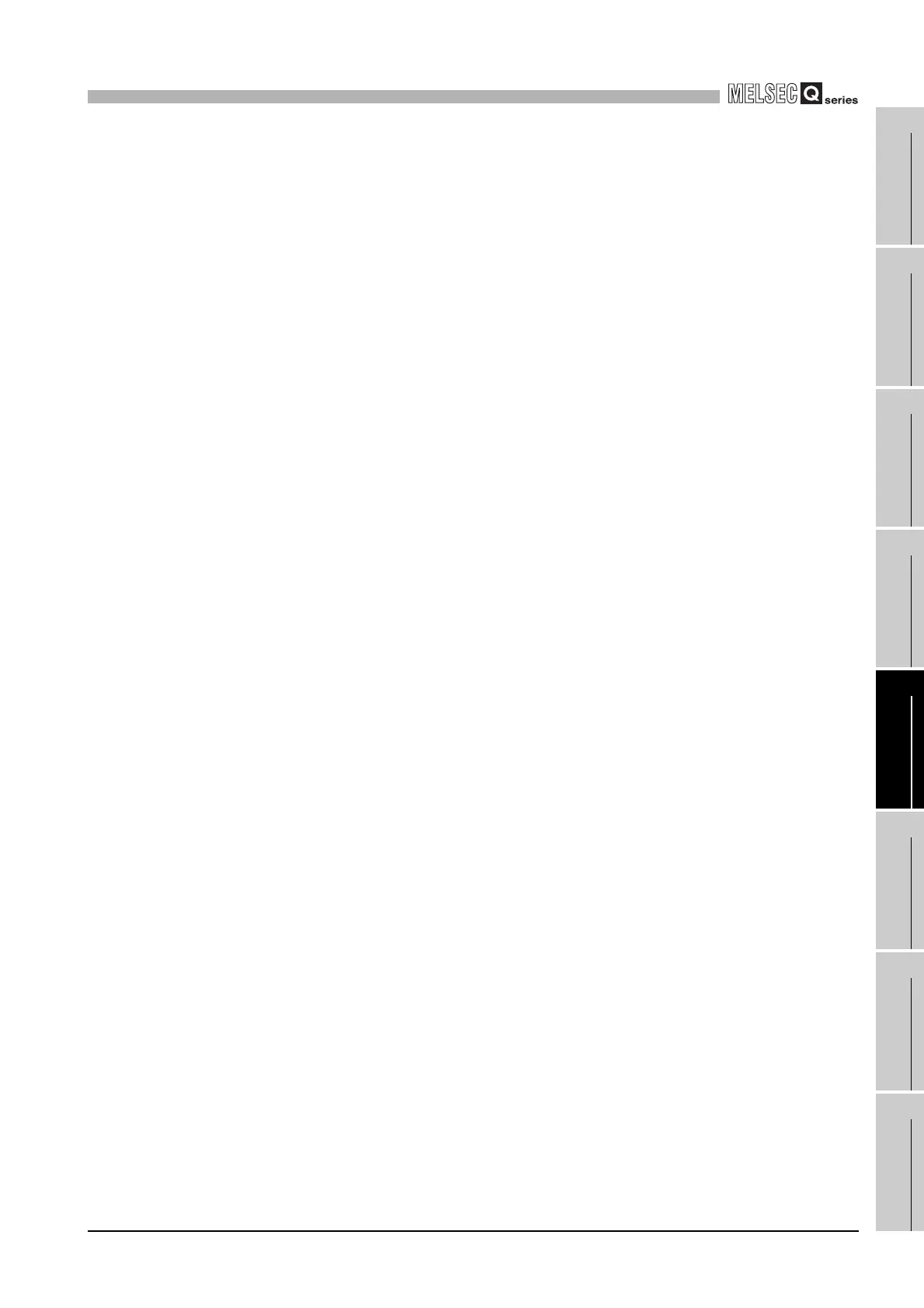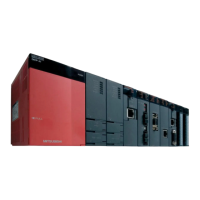5
SETTINGS AND PROCEDURES BEFORE OPERATION
5.2 Fail-safe Circuit
5 - 9
1
OVERVIEW
2
SYSTEM
CONFIGURATION
3
SPECIFICATIONS
4
FUNCTIONS
5
SETTING AND
PROCEDURES
6
I/O NUMBER
ASSIGNMENT
7
MEMORIES AND
FILES
8
INSTALLING /
UNINSTALLING
* 1 Perform programming to execute the following operation at start of the C Controller module.
1) Turning ON Ym when battery voltage drop is detected.
Create a program so that Ym is turned ON by the QBF_Y_Out_BitEx function when the "Built-
in battery error status" of the QBF_ReadStatusEx function turns to 1 (battery error occurrence).
2) Turning ON Yn at start of the user program.
Create a program so that Yn is turned ON to release interlocks at start of the C Controller
module user program.
3) Starting system processing after XM turns ON and the DC input signals is established (after the
DC input signal establishment time elapses).
Create a program so that the system processing is executed when the DC input signal
establishment time elapses after XM has turned ON (this can be confirmed by the
QBF_X_In_BitEx function).
(The DC input signal establishment time is a time from when RA2 turns ON until the DC input
signal is established 100%. Set the time to 0.5 s.)
However, when a voltage relay is used as RA2, it is not necessary to set the DC input signal
establishment time in the user program.









